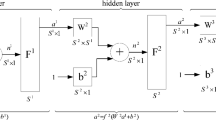Abstract
There are decision-making problems that involve grouping and selecting a set of alternatives. Traditional decision-making approaches treat different sets of alternatives with the same method of analysis and selection. In this paper, we propose clustering alternatives into different sets so that different methods of analysis, selection, and implementation for each set can be applied. We consider multiple criteria decision-making alternatives where the decision-maker is faced with several conflicting and non-commensurate objectives (or criteria). For example, consider buying a set of computers for a company that vary in terms of their functions, prices, and computing powers. In this paper, we develop theories and procedures for clustering and selecting discrete multiple criteria alternatives. The sets of alternatives clustered are mutually exclusive and are based on (1) similar features among alternatives, and (2) preferential structure of the decision-maker. The decision-making process can be broken down into three steps: (1) generating alternatives; (2) grouping or clustering alternatives based on similarity of their features; and (3) choosing one or more alternatives from each cluster of alternatives. We utilize unsupervised learning clustering artificial neural networks (ANN) with variable weights for clustering of alternatives, and we use feedforward ANN for the selection of the best alternatives for each cluster of alternatives. The decision-maker is interactively involved by comparing and contrasting alternatives within each group so that the best alternative can be selected from each group. For the learning mechanism of ANN, we proposed using a generalized Euclidean distance where by changing its coefficients new formation of clusters of alternatives can be achieved. The algorithm is interactive and the results are independent of the initial set-up information. Some examples and computational results are presented.
Similar content being viewed by others
References
Chan, H. M. and Milner, D. A. (1982) Direct clustering algorithm for group formation in cellular manufacture. Journal of Manufacturing Systems, 9, 65-75.
Day, W. H. E. (1986a) Concensus classification. Journal of Classification, 3, 2.
Day, W. H. E. (1986b) Foreword: Comparison and consensus of classifications. Journal of Classification, 3, 183-185.
Dyer, J. S., Fishburn, P. C. and Steuer, R. E., Multiple criteria decision making, Multiattribute utility theory: The next ten years. Management Science, 38.
Ferligoj, A. and Batagelj, V. (1992) Direct multicriteria clustering algorithms. Journal of Classification, 9(1), 43-61.
Goicoechea, A., Hansen, D. R. and Duckstein, L. (1982) Multi-objective Decision Analysis with Engineering and Business Applications, J. Wiley.
Grossberg, S. (1976) Adaptive pattern classification and universal recording. I: parallel development and coding of neural feature detectors. Biological Cybernetics, 23, 121-134.
Grossberg, S. (1987) Competitive learning: from interactive activation to adaptive resonance. Cognitive Science, 11, 23-63.
Hwang, C. L. and K. Yoon, (1981) Multiple Attribute Decision Making: Methods and Applications, Springer-Verlag, Berlin; p. 186.
Kamal, S. and Burke, L. I. (1994) FACT: A new neural network-based clustering algorithm for group technology. International Journal of Production Research, 34.
King, J. R. (1980b) Machine-component grouping in production flow analysis: an approach using a rank order clustering algorithm. International Journal of Production Research, 18, 213-232.
Kohonen, T. (1984) Self-organization and Associative Memory, Springer-Verlag, Berlin.
Kohonen, T. (1988) An introduction to neural computing. Neural Networks, 1, 3-16.
Kusiak, A. (1987) The generalized group technology concept. International Journal of Production Research, 25, 561-569.
Kusiak, A. and Heragu, S. (1987) Group technology. Computer in Industry, 9, 83-91.
Malakooti, B. and Zhou, Y. (1994) Feedforward artificial neural network for solving discrete multiple criteria decision making problem. Management Science, 40, 1542-1561.
Malakooti, B. and Yang, Z. (1995) Avariable unsupervised learning clustering neural network approach with application to machine-part group formation, International Journal of Production Research, 33(9), 2395-2413.
Malakooti, B. and Zhou, Y. (1998) Approximating polynomial functions by feedforward artificial neural networks. capacity, analysis, and design. Applied Mathematics and Computation, 90, 27-52.
Malakooti, B. and Subramanian, S. (1998) Generalized polynomial decomposable multiple attribute utility functions for ranking and rating of alternatives AMC, 91.
Malakooti, B. and Raman, V. An interactive artificial neural network approach for machine set-up problems. Journal of Intelligent Manufacturing, 9 (In press).
Malakooti, B., Zhou, Y., Tandler, E. C. (1995) In-process regressions and adaptive neural networks for monitoring and supervising machining operations. Journal of Intelligent Manufacturing, 6, 53-66.
Pao, Y. H. (1989) Adaptive Pattern Recognition and Neural Networks, Addison-Wesley, Reading, MA.
Rumelhart, D. E. and Zipser, D. (1985) Feature discovery by competitive learning. Cognitive Science, 9, 75-112.
Rumelhart, D. E. Hinton, G. and Williams, R. (1986) Learning internal representations by back-propagating errors. Nature, 323, 533-536.
Steuer, R. H. (1986) Multiple Criteria Optimization: Theory, Computation, and Application, J. Wiley, New York.
Sun, M. H., Stam, A and Steuer, R. E. Solving multiple objective programming problems using feed-forward artificial neural networks: The Interactive FFANN Procedure, Manage SCI 42(6), 835-849.
Stam, A., Sun, M. H., Haines, M. (1996) Artificial neural network representations for hierarchical preference structures, Comput Oper Res 23(12), 1191-1201.
Wang, J. and Malakooti, B. (1992) A feedforward neural network for multiple criteria decision making, Computers and Operations Research, 19(2), 151-167.
Author information
Authors and Affiliations
Rights and permissions
About this article
Cite this article
Malakooti, B., Raman, V. Clustering and selection of multiple criteria alternatives using unsupervised and supervised neural networks. Journal of Intelligent Manufacturing 11, 435–451 (2000). https://doi.org/10.1023/A:1008934512672
Issue Date:
DOI: https://doi.org/10.1023/A:1008934512672




